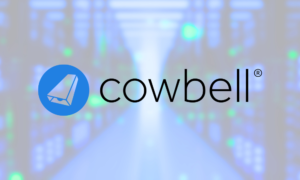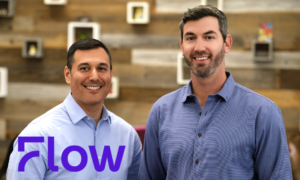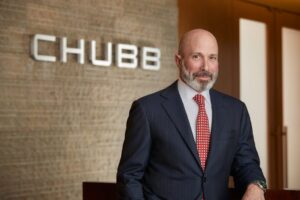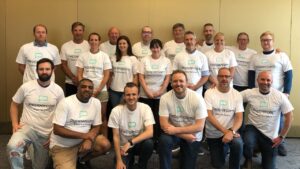Over the past three centuries, the insurance industry has essentially evaluated risk in the rearview mirror – looking back at loss profiles, then developing solutions and premiums, according to Case, who spoke recently at from the S&P Global Ratings Insurance Conference.
But the risks have changed in the 21st century, and the insurance industry must react to remain relevant to customers. Case said the industry must use forward-looking analysis, content and information to be able to assess cybersecurity, intellectual property or climate risks.
“Our ability to meet customer needs and accelerate innovation will only improve in our ongoing combination with Willis Towers Watson, which continues to increase our commitment and enthusiasm for the potential of the combined company,” he said in comments made during an April 30 appeal report.
During the S&P conference, Case said, the Aon-Willis Towers Watson merger aims to improve the relevance of the industry, which has collapsed over the past 30 years.Greg case
Case spoke at the S&P meeting on June 9, just days before the US Department of Justice announced that Aon’s purchase of WTW would hurt competition by leaving “Americans with less choice.” , higher prices and lower quality services ”. Aon and WTW responded in a joint statement that they did not agree with the DoJ’s action, “reflecting a lack of understanding of our business, the customers we serve and the markets in which we operate. “.
The brokers said they “remain fully committed to the benefits of our combination”.
A research note compiled by GlobalData said: “The merger of Aon and WTW would allow a combination of complementary solutions, capabilities and skills that would better help consumers, at a time when the pandemic has radically changed the way consumers companies must create innovative and rapid solutions. that mitigate their operational risks. London-based GlobalData provides data analytics and analysis on the world’s largest industries.
RJ Lehmann, senior researcher at the International Center for Law and Economics in Portland, Oregon, commented: Space where this combination could increase innovation and take it to a much larger scale.
To bring innovation to large multinationals, he added, “you need brokers with global reach”.
At the S&P conference, Case explained that the Aon-Willis Towers Watson combination has nothing to do with being bigger, which he says is “irrelevant” to customers. Instead, he said, it’s about building a business “fundamentally driven by innovation.”
“Bigger doesn’t mean anything to customers. They don’t care about it. What interests them is what you do on our behalf that will help us run our businesses more effectively, ”he said.
Aon and Willis Towers Watson are “fundamentally innovation driven” and are looking for ways to be more efficient at bringing new content and ideas to customers.
Decreased relevance of industry
He said the industry as a whole is not doing enough to develop content for long-term risks such as pandemic, cybersecurity and climate change, as well as risks to intangibles (which include the intellectual property, data, brand and reputation). As a result, he added, the industry becomes less relevant to customers.
Case said one measure of the industry’s relevance is to look at risk placement as a percentage of GDP, which continued to increase between the 1970s and 1990s. As the economy grew , over those two decades, the insurance industry grew and grew proportionately more than the economy “because we were helping clients with things that were really relevant to the way they built their business. “.
But, by the mid-1990s, the industry’s relevance began to wane.
“That doesn’t mean we haven’t done great things on behalf of our clients. It just means that intellectual property and intangible assets now account for 85% of the value of businesses, for which the insurance industry typically does not provide solutions. In the 1970s, he said, that figure for intangibles was around 20%.
What is the industry doing to deal with and defend intangibles? Case said the answer is, “Not much.
He cited cyber as another example where the industry is not doing enough to help customers.
“Cyber insurance is a $ 7 billion to $ 8 billion premium program right now in our industry, but our clients face over $ 600 billion in potential related losses. Basically, we are not doing enough. We are becoming less relevant in the context of customer needs, which continue to increase, ”he said.
Case said the proposed merger of Aon and Willis Towers Watson aims to help the insurance industry break the downward trend in relevance. He described the suit as “a step, the best step we can take to help break this trend.”
Creation of a “new network”
Case said the merger will benefit everyone – customers, market and competitors.
“Everyone benefits because we want to create ‘net new’. Net new in the climate, net new in intangibles and intellectual property. Net new in cyber. Net new in pandemic, which we must be able to think about. “
He suggested that the merged company would serve as a bridge between capital, customers and new markets. Now he has explained it.
Capital is not going to enter a new market unless it understands how it “can make a difference and get a return,” he said.
Free Webinar: Why Insurance Products Need to Be Flexible. Sign up here!
In addition, customers will not buy a product “unless they can describe to senior management how it will help them improve their operational performance, strengthen their balance sheet and reduce their volatility”.
Building bridges
“We have to be the bridge,” Case continued, noting that part of being a bridge is creating understanding through data, analysis, content and information.
“How do you take a 7 or 8 billion dollar cybermarket and make 25 or 30 billion dollars? How do you take an intangible asset market, which is largely nothing, and turn it into a $ 100 billion market? He asks himself. ” It’s doable. It is within our grasp if we can develop and lead the [needed analytics]. “
He described a success story in intellectual property where insurance products were created to help entrepreneurs borrow against their intangible assets, their patent portfolios. With such products, entrepreneurs don’t have to give up their equity to raise capital, Case explained.
In many ways, the analysis, the insight required “means we get customers to say, ‘Wow, this can help my business.’ I want to invest. I want to pay for it… ”” When that happens, he noted, it is natural for capital (of insurers and investors) to follow.
If the insurance industry is to shift the relevance curve, it needs to create compelling content for customers, which the Aon-Willis Towers Watson combination is “trying to do”.
Although the deal with Willis Towers Watson was announced before the pandemic, Case said, “The pandemic has amplified all of the reasons we make Aon-Willis Towers Watson. This has increased the need for innovation and increased awareness and understanding of the need for innovation.
During the meeting, Case said, brokers hoped to close “our combination as early as possible in the third quarter.” But that was before the announcement from the Department of Justice.
Via UK Times News








